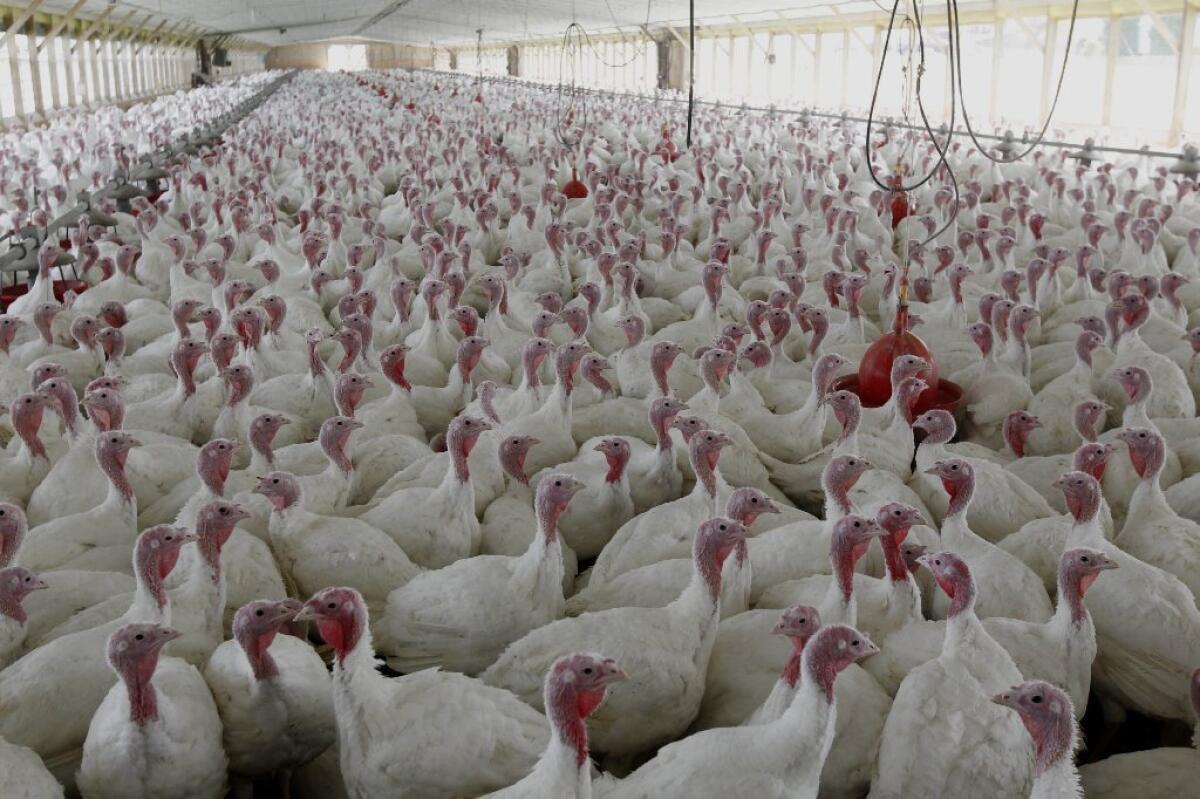The FDA’s toothless action on animal-feed antibiotics isn’t enough

Almost 40 years ago, the Food and Drug Administration found that the practice of routinely feeding antibiotics to livestock that are not sick posed a risk to human health. This week, after decades of delay, the FDA issued a weak, partial and voluntary guidance plan to address this problem.
The industrial farms that produce most of the meat we eat use antibiotics to speed up growth or to compensate for the filthy, crowded environments in which animals are kept. The medical community and public health groups have been warning for years that this practice encourages the spread of antibiotic-resistant bacteria. The Centers for Disease Control and Prevention reported this year that infections caused by antibiotic-resistant bacteria (or superbugs, as they are often called) kill at least 23,000 Americans every year. Antibiotic-resistant infections also complicate treatment, often reducing options and leading to longer, more expensive illnesses.
ABOUT BLOWBACK: FAQs and submission policy
By finally releasing its plan, the FDA has made clear that antibiotic abuse jeopardizes human health, and that it intends to reduce at least some of the uses of antibiotics on animals that are not sick. That’s the good news. We need the FDA to be vocal on this issue.
But here’s the bad news: The FDA’s action isn’t enough.
In its editorial Thursday, The Times rightfully noted the need to have the FDA address the threat. However, it too optimistically stated that the FDA guidelines “call for banning the use of medically important antibiotics as growth promoters and ending all over-the-counter sales; a veterinary prescription will be required.”
YEAR IN REVIEW: Washington’s 5 biggest ‘fails’ of 2013
The Times didn’t intend for this, but much of what’s wrong with the FDA’s action is captured in the statement.
First, The Times is right that the FDA has called on the pharmaceutical industry to stop selling antibiotics for some non-treatment uses -- “called on” meaning “if the industry wants to.” This is not a ban, as the editorial rightly notes later in the piece by saying the guidelines are voluntary. Problem is, this approach has yielded no change to date. In fact, despite repeated warnings from the medical community, the amount of antibiotics sold for livestock has been steadily increasing over the last decade.
Second, the FDA policy does not call for ending all over-the-counter sales or require a veterinary prescription for such sales. The FDA’s policy focuses on only some of the problematic over-the-counter sales: antibiotics sold to speed up animal growth -- or, as The Times calls them, “medically important antibiotics as growth promoters.”
YEAR IN REVIEW: 10 tips for a better life from The Times’ Op-Ed pages in 2013
Unfortunately, the FDA’s policy in effect condones the routine use of antibiotics on unsick animals that are kept in poor conditions in which diseases are easily spread. These uses -- growth promotion and disease prevention -- are very similar; they involve the use of low doses of antibiotics in the feed of large numbers of animals day after day. Many drugs are currently approved for both uses. Pharmaceutical companies can drop the label for growth promotion and continue to sell the drug for disease prevention, allowing problematic uses to continue.
Moreover, even if a company elects to accept greater veterinary oversight, the FDA has proposed loosening the rules for such oversight and to continue to allow antibiotic use for disease prevention.
So even if companies volunteer to comply with the new FDA suggestions, it doesn’t seem likely to significantly reduce antibiotic use on animals that are not sick. Unsurprisingly, the chief executive of a leading manufacturer of livestock drugs recently told the Wall Street Journal that the new policy was not expected to have a significant effect on company revenues.
The Times also writes that “in the absence of federal law, the FDA has produced a useful template for keeping these crucial drugs effective for humans for as long as possible.” In fact, federal law allows the FDA to take more decisive action, but the agency is tiptoeing around its authority to act. As a result of a Natural Resources Defense Council lawsuit, the FDA was ordered to use its authority to stop the use of antibiotics in animal feed when that use isn’t safe. The FDA has appealed that decision.
In reality, the FDA doesn’t need to ask industry nicely. It can move to require stricter controls now. It has appealed two decisions from federal district court, and claims its polite requests to stop poor practices will get the job done. We have some doubts about that.
Sick people and sick animals need antibiotics that work. Reversing the tide of antibiotic abuse on industrial farms will take more than voluntary guidance from the FDA. The agency has been dragging its feet on this issue for more than 35 years. The NRDC’s case against the FDA is pending in federal appeals court. We hope a favorable decision will finally result in the FDA taking more effective action.
ALSO:
Gay rights: Can discrimination be legal?
Sandy Hook’s victims: Did we let them down?
Gisele Bundchen gives regular moms fits -- and men a great gift idea
Peter Lehner is the executive director of the Natural Resources Defense Council.
If you would like to write a full-length response to a recent Times article, editorial or Op-Ed and would like to participate in Blowback, here are our FAQs and submission policy.
More to Read
Start your day right
Sign up for Essential California for news, features and recommendations from the L.A. Times and beyond in your inbox six days a week.
You may occasionally receive promotional content from the Los Angeles Times.






